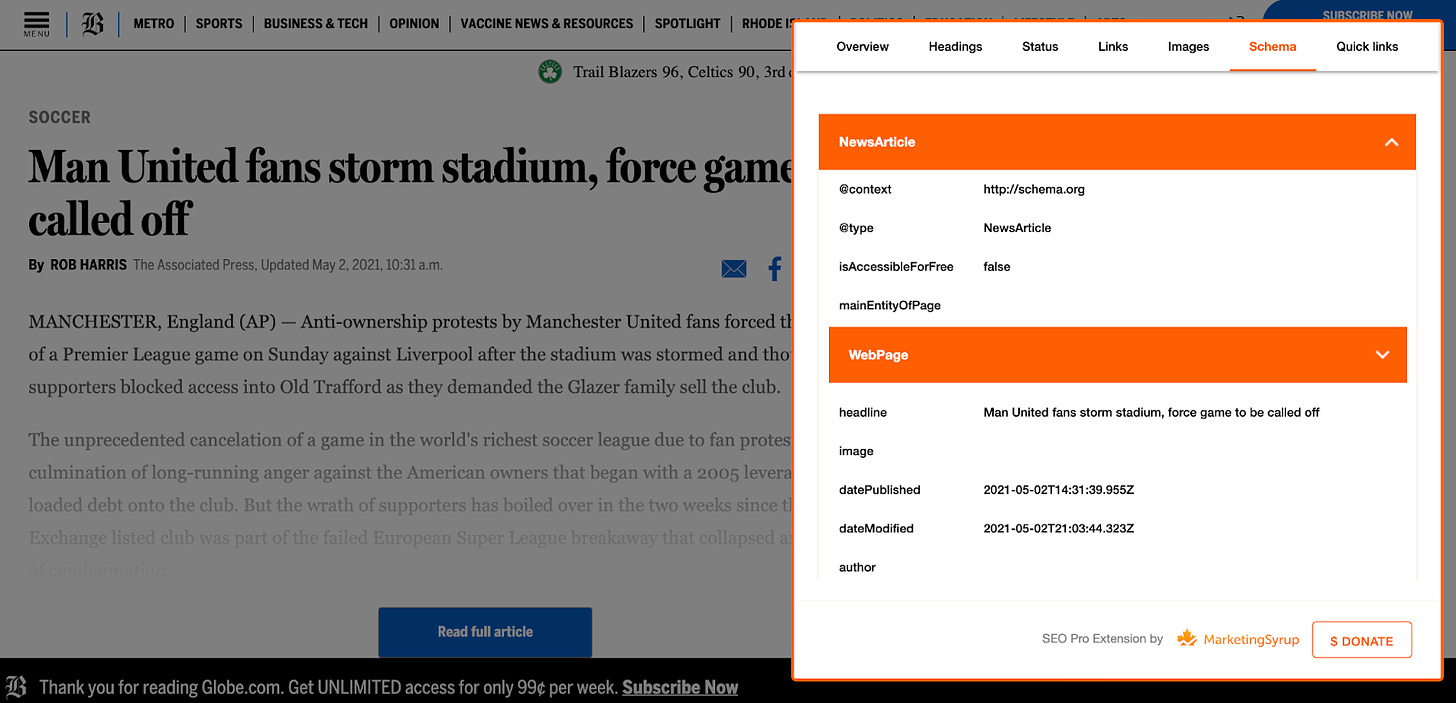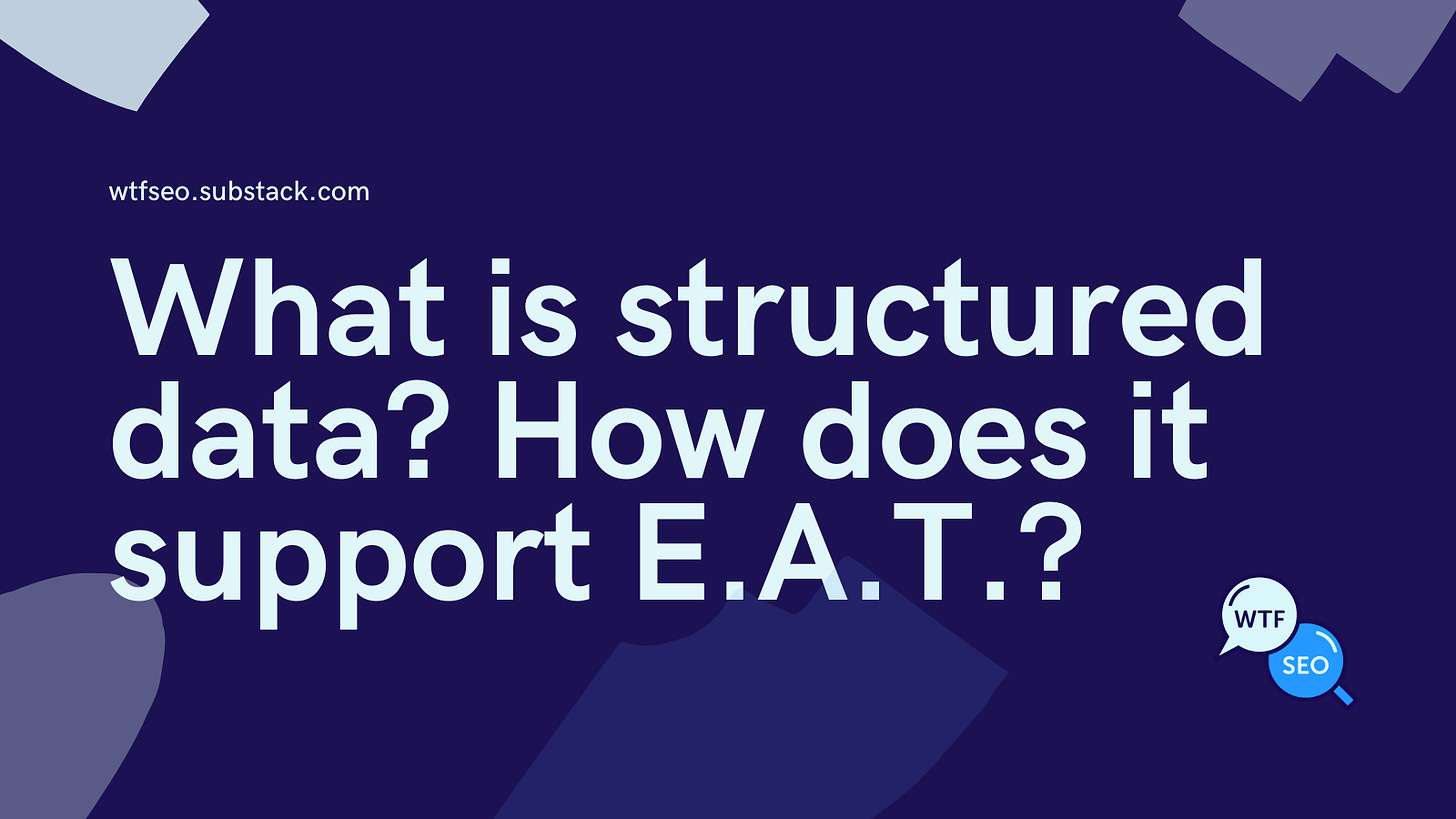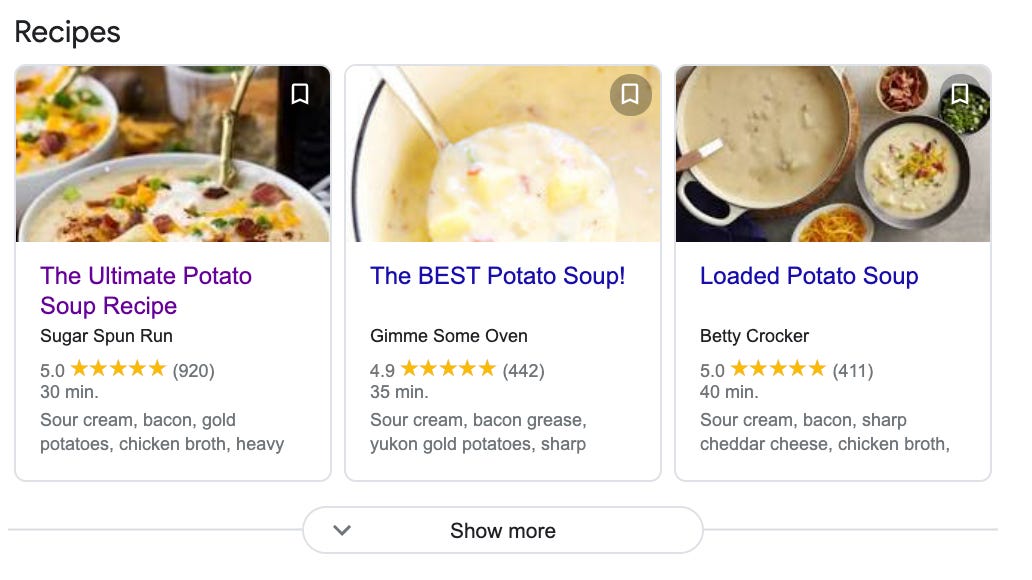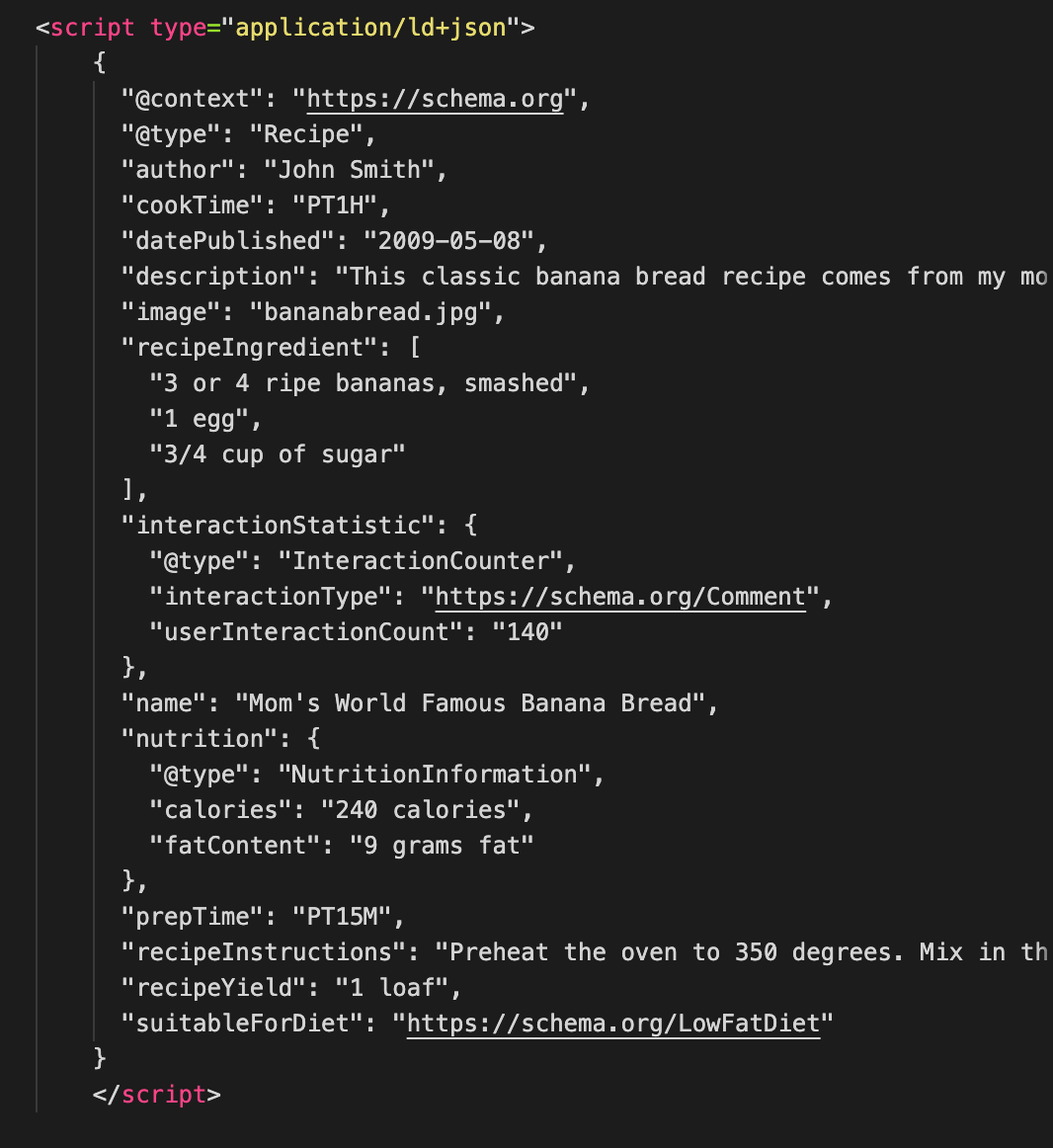What is structured data? How can it support E.A.T. efforts?
In issue no. 13, Shelby looks at structured data and explains how it can help your E.A.T. efforts for SEO.
Shelby’s at the helm today, and shortly we’ll be diving into a more technical SEO topic: structured data.
Last week, Jessie took us through the basics of what E.A.T. is and how to optimize it for your news organization. Today, we’re going to get a little bit more technical and focus on how to use structured data on your site to help make sure your E.A.T. content stands out to the robots.
In this issue:
What is structured data?
How structured data helps with E.A.T
How do I add structured data to my pages?
THE 101
So wait – what is structured data?
That’s a good place to start! Structured data is a standardized way for providing a bunch of information about a page in a way that helps classify and organize its content.
It’s a way to provide “explicit clues” to search bots about the meaning of the page, or specific context within the page. For example, we can use structured data for the details of a recipe, the specifics of an author’s credentials, a movie review or even a list.
Structured data is written in a coded vocabulary that search engines can understand. Most search platforms agreed once upon a time to follow the structured data rules laid out on schema.org.
Schema.org is where I recommend you go for all structured data advice, but keep in mind that Google will also give you documentation on their own search behaviour.
Structured data (or Schema.org data) is written in JSON-LD (JavaScript Object Notation for Linked Data), a code snippet that tells you the exact details of the content. Sometimes it will be written as microdata or RDFa, but we strongly encourage you not to use those.
The reasons we use JSON-LD to write structured data:
It is standardized and recognized by all search engines;
Can be placed anywhere on the page – it is decoupled from the actual text;
It is easy to use for coders and non-coders alike;
It is the easiest way to add metadata to your site;
It is the option that is least likely to break your site.
Why should I care?: Well, Jessie brought up rich snippets a few weeks ago, and how these are the driver of most traffic (Google, in particular, is trying to answer more questions through its own rich snippets on SERPs, which is considered “Position 0”.) from search. Structured data makes your content richer for those rich snippets. Imagine that!
Above is what the user sees on Google. Below is what the robots see.
🔗 Read more: What is structured data (for beginners)
THE WHY
How structured data helps with E.A.T
The simplest way that structured data helps your organization’s pursuit of providing E.A.T content is by creating a solid relationship between your content, your brand and the robots.
You provide direct information about what your brand is and how you are an expert on the information you are providing;
You create connections Google or other search engines wouldn’t have established otherwise (particularly with your organization schema);
Resolves ambiguity of organizations that may have the same name, which will help differentiate you on the market;
Can help Google assess the reliability and credibility of your site and the reporters.
THE KNOW HOW
How do I add structured data to my pages?
Start here: Google has a search gallery where you can see all the different types of structured data you can use on your page. Depending on the type of page you’re working on, different structured data will apply. But, they supply you with what you need to get started.
Bigger newsrooms: If you’re a bigger newsroom on a custom CMS with a group of web developers, they may be able to help implement the structured data you need on each set of pages (for example, if you provide movie reviews, recipes and author data), so you just have to add the specifics and the code will generate for you. Talk to your development team about what works best for your organization.
Smaller newsrooms: If you’re a medium or small publisher, implementing structured data can still certainly be done! Yoast has a structured data component to its plugin for WordPress users, or there are a ton of other plugins to help you.

PS: If you haven’t, download the SEO Pro Extension (the popup in these screenshots) by MarketingSyrup. It gives you all of the information on a page you need to audit your own SEO. 🎉

When adding structured data to your pages, be as descriptive as possible. Fill out as many of the possible sections – this is a massive boost for your E.A.T content, which relies on being trustworthy to fight misinformation.
Structured data markup can also be added on a one-time basis.
If, for example, you want to test out some review schema on one of your pages, you can add it as custom HTML (this is as simple as going to your text editor or whatever allows you to add custom HTML).
Once you add the markup, you can check if you input it properly, and how the robots will see it, by using Google’s rich snippets testing tool.
Best practices:
Aim to have the NewsMediaOrganization markup on all pages
Aim to have the NewsArticle markup on all news articles (or Article markup. Read through both and see which works for your pages).
Do as little work as possible: automation is your friend. Find a way to add it and leave it.
✔️ Action item: Find a well-performing article that could use some structured data (recipes, reviews). Add the structured data as a code snippet or download a plugin to help you, and then test that it is valid. Google the page with descriptive words to see if it shows up with the proper structured data.
The bottom line:
Structured data makes sense of the content on your page, right down to identifying that a page is an article versus just a regular old blog. Use this to your advantage and provide the information easily to search engines and increase your chances of ranking.
But remember! Not everything we advise will result in a guaranteed ranking. SEO is a game of playing the odds and working really, really hard over a period of time.
FUN + GAMES
SEO quiz
What’s the name of the language you should write your structured data in?
HTML
JSON-LD
RDFa
Microdata
RECOMMENDED READING
News SEO: How to optimize your news site from Yoast (WordPress SEO plugin)
An infographic breaking down the connection between E.A.T and structured data
Don’t forget to bookmark our glossary, submit a question for our upcoming Q&A issue and share this with all of your friends. Have something you’d like us to discuss? Send us a note on Twitter (Jessie or Shelby) or to our email: seoforjournalism@gmail.com.
FUN + GAMES
The answer: JSON-LD
Written by Jessie Willms and Shelby Blackley.






